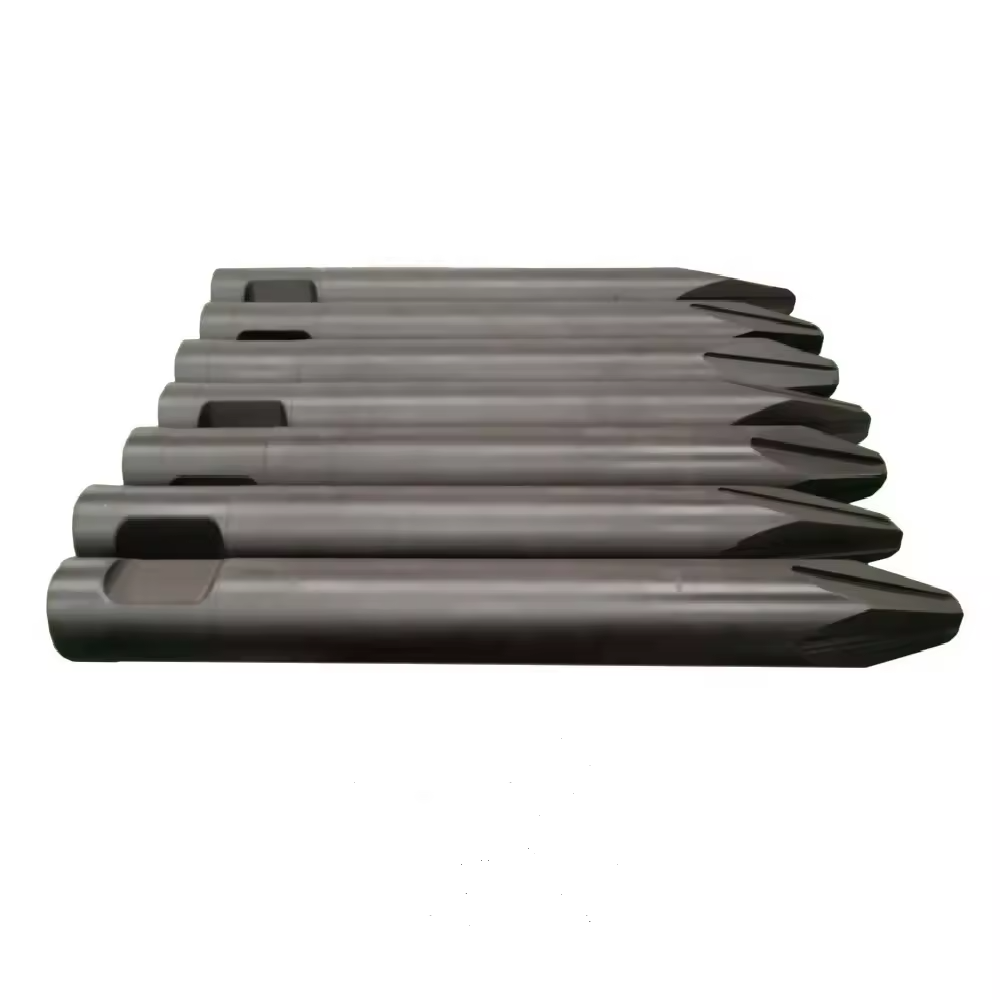

A bulldozer is an earthmoving machinery capable of excavating, transporting and discharging rock and soil. It is widely used in open pit mines.
Email: equip@lichmach.com
A bulldozer is a powerful type of earthmoving equipment designed to excavate, transport, and discharge soil, rock, and other materials over short distances. Known for its strength and versatility, the bulldozer is widely used in open-pit mining operations, as well as in construction, infrastructure development, and land clearing projects.
In mining applications, bulldozers play both supporting and primary roles. Supporting tasks include building earth stockpiles, leveling dump sites, clearing scattered minerals, and preparing work platforms and construction bases. In more direct mining applications, bulldozers are used for stripping overburden, excavating sand deposits, assisting scrapers and rock plows, and cooperating with other earthmoving machinery to modify the terrain—especially when no traditional transport systems are in place.
Their ability to operate under tough environmental conditions and perform multiple tasks makes bulldozers an indispensable tool across various industries, from mining and forestry to civil engineering and disaster recovery.

| Model | LC160 |
| L*W*H(mm)(Ripper not included) | 5140*3388*3032 |
| Weight(Kg)(Ripper not included) | 17000 |
| Engine | WD10G178E25 |
| WP10G178E355 | |
| Power/rated number of revolutions (KW/rpm) | 131/1850 |
| Grounding length and grounding specific pressure (MPa) | 2430 |
| 0.067 | |
| Climbing performance(°) | 30 |
| Number of track shoes (per side) | 37 |
| Track shoe width (mm) | 510(560/610) |
| Track center distance (mm) | 1880 |
| Chain rail pitch (mm) | 203.2 |
| Number of supporting wheels (per side) | 2 |
| Number of rollers (per side) | 6 |
| Blade model | Straight tilt shovel |
| Blade length*height (mm) | 3388*1149 |
| Blade capacity (m³) | 4.5 |
| Blade lifting height (mm) | 1095 |
| Blade depth (mm) | 540 |
| Ripper type | three teeth |
| Ripper lifting height (mm) | 600 |
| Forward speed of each gear (km/h) | F1:0~2.67 |
| F2:0~3.76 | |
| F3:0~5.41 | |
| F4:0~7.62 | |
| F5:0~11.13 | |
| Reverse speed of each gear (km/h) | R1:0~3.48 |
| R2:0~4.90 | |
| R3:0~7.05 | |
| R4:0~9.92 |
Bulldozers are generally categorized based on their movement mechanisms into two main types:
Crawler-type bulldozers use continuous tracks, giving them excellent traction and ground stability. Their low ground pressure (typically between 0.04 and 0.13 MPa) makes them ideal for soft, uneven, or muddy terrain. They offer:
High traction force
Superior climbing ability
Stable operation on rough terrain
However, they also have lower travel speeds, making them more suitable for tasks where mobility is secondary to performance in difficult ground conditions.
Wheel or tire-type bulldozers are equipped with rubber tires and offer higher travel speeds and greater maneuverability. Their advantages include:
Quick relocation between job sites
Flexible operation in urban or confined areas
Shorter operational cycles
While they have lower traction compared to crawler types, wheel bulldozers are ideal for projects requiring frequent site changes or working on hard, even ground.
Bulldozers can also be classified according to their intended use, generally falling into two main categories:
These are standard models designed according to industry norms and specifications, and are most commonly used in general earthmoving and grading operations. They strike a balance between versatility, durability, and cost-efficiency, making them suitable for a wide range of applications in construction, mining, and agriculture.
These bulldozers are customized or specially designed to operate in unique or extreme environments. Common types include:
Wetland & Swamp Bulldozers: Equipped with extra-wide triangular track shoes to reduce ground pressure and prevent sinking in soft terrain.
Amphibious Bulldozers: Designed for work in shallow water or marshy conditions.
Underwater Bulldozers: Engineered with sealed components for operation in submerged environments.
Cabin-Type Bulldozers: Feature enclosed, pressurized cabins for use in dusty or hazardous conditions.
Unmanned/Remote-Controlled Bulldozers: Operated remotely for safety in dangerous areas such as landslides or high-risk mining zones.
High-Altitude Bulldozers: Designed for reliable performance in thin air and cold temperatures of elevated regions.
Plateau Prototypes: Built for operation on rugged, mountainous terrain where oxygen levels and weather conditions present unique challenges.
These specialized machines allow bulldozers to adapt to specific operational environments, ensuring productivity and safety across a wide range of demanding use cases.

Contact With Us
If you have any questions please fell free to contact with us.